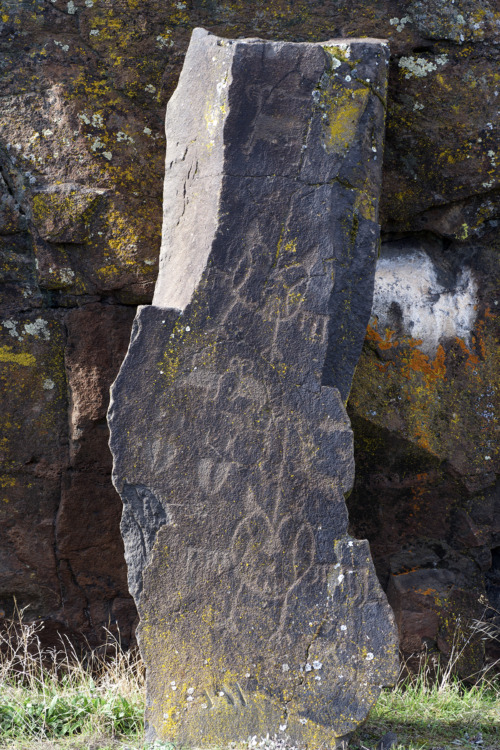Petroglyphs/pictographs are not art. They are sacred images that represent significant cultural themes, messages, beliefs to a Tribe. They were not created for aesthetic purposes. They were created to teach, warn, or record those not yet born. Even though we may think that they are pretty, beautiful, pleasant to look at, those are not the values inherent in the images you see. Those are the values that you as the viewer are placing on the image. Please stop calling them rock art.
– Jon Shellenberger (Yakama)
How do you persist as an individual, a group, a people, when insult is added to injury in a never-ending stream of violations, ignorance – willful ignorance – appropriations, or plain, colonial hostility? What are the sources for resilience, when you face scarcity, displacement, disrespect, and racism in continuity?
These thoughts went through my mind while standing in a sunlit, silent landscape on the Washington side of the Columbia river near Horsethief Butte, the quietude only occasionally interrupted by the calls of birds of prey.

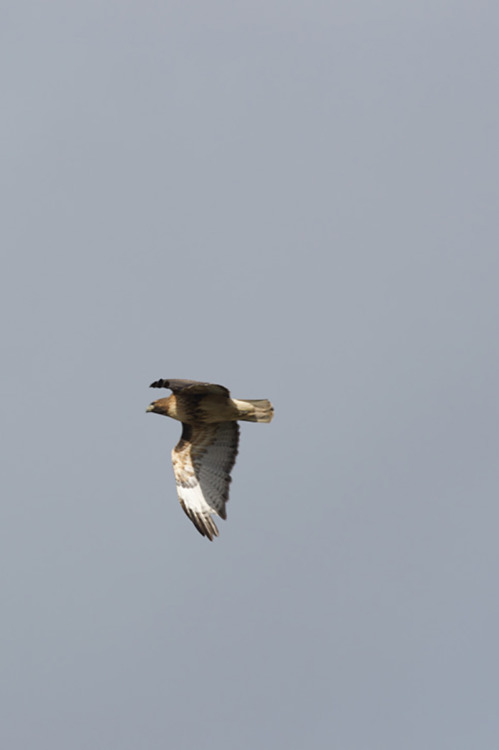

I was looking across the Temani Pesh-Wa Trail, lined by pictographs (rock paintings) and petroglyphs (rock carvings) that were created by the First People who lived in the Gorge and the surrounding uplands. The introductory panel read: Honor the Past, Respect the Present.
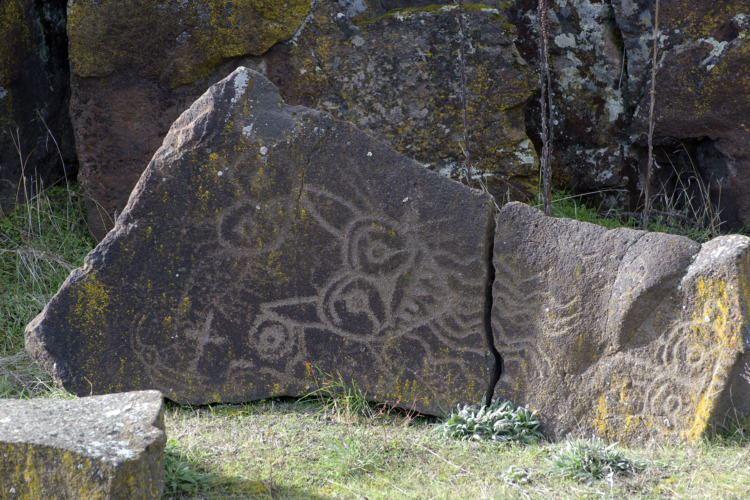

The story of these particular stones is one of sorrow and resilience. Little honor or respect has been paid to them from us non-Indigenous folks, and they were relocated to the Columbia Hills a few years ago.
Nobody knows how many of these images existed along the shores of the Columbia. It is estimated there were 90 or so sites between Pasco and The Dalles. When the rocks became threatened by the inundation of the John Day Reservoir, the U.S. Army Corps of Engineers cut out just a few of them in time and they were relocated under the guidance of Chief Gus George (Rock Creek Indian) to the small town of Roosevelt, Washington. Stored there, in a small, unprotected park, they were subject to vandalism and decay, as the local community simply did not have the means to protect them from visitors who came to do rubbings, or worse. Several disappeared, taken as souvenirs or stolen by collectors. (I found much of this information here and here.)



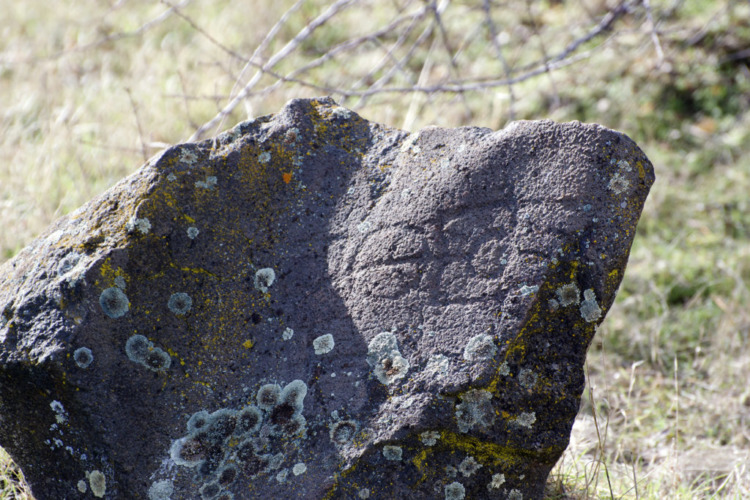

Relocated again in 2003, they spent an interim decade in Horsethief Park until they found a final home at the Temani Pesh-Wa Trail in 2012 with the help of the Wanapa Koot Koot working group that consisted of representatives of the Confederated Tribes and Bands of the Yakama Nation, the Confederated Tribes of the Umatilla Reservation, the Confederated Tribes of the Warm Springs Reservation of Oregon, the Nez Perce Tribe (Nimiipuu), and government administrators. Tribal elders and cultural specialists engaged to present tribal values and respect for the original creation of their ancestors. The site is open seven months of the year and some of the paths are only accessible with a guided tour, including the path leading to the cliff face that depicts Tsagaglalal, or “She Who Watches” in the Wasco-Wishram language.
Vandalism and theft is a physical attack on heritage objects. Another is appropriation of imagery that does not belong on t-shirts, mugs or any other tourist trap merchandise. But there is also an issue with the use of language and interpretation of something that is rooted in a different culture. As early as 1719 the writer and clergyman Cotton Mather described “writing on stone” he encountered in his home region of Massachusetts. Across the centuries the images caught the interest of archeologists, anthropologists, explorers, and people interested in the history of their region. Guesses about origins and interpretive or value judgements proliferated.
(Sources for these archival images can be found here.)
Eventually people settled on calling them rock art – a misnomer, according to eminent Native American artist Lillian Pitt and Jon Shellenberger (Yakama), who holds a BS in Anthropology and MA in Cultural Resource Management.


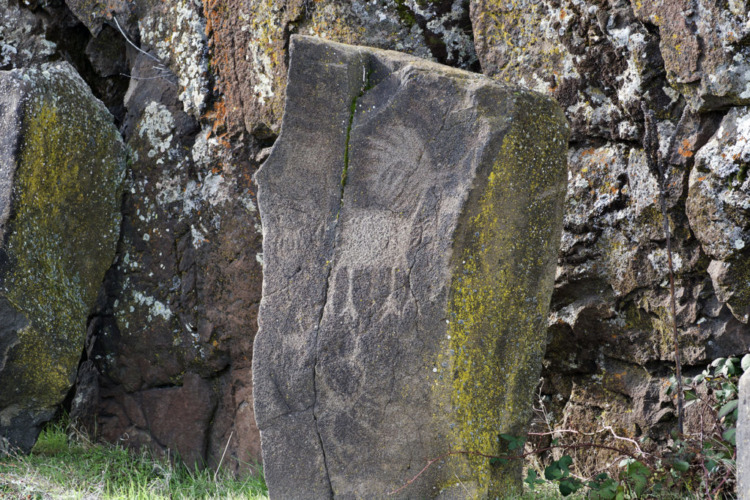


There is a lot of meaning conveyed through petroglyphs/pictographs. Some of that meaning is known and some of it is only known by certain individuals within certain families. Many tribes didn’t have a written language and depended on oral tradition to perpetuate their culture. These images are a manifestation of the culture as it relates to the environment. They demarcate sacred sites, warn people to beware, indicate the presence of animals or plants, and are at times prophetic. Elders are still learning about the meaning of specific petroglyphs and its only in certain stages of life that they are able to understand their meaning.
– Jon Shellenberger
Contrast that with an interpretive sign at another petroglyphs site at Death Valley National Park:
Indian rock carvings are found throughout the Western hemisphere. Indians living today deny any knowledge of their meaning. Are they family symbols, doodlings, or ceremonial markings? Your guess is as good as any. Do not deface – they cannot be replaced. (Bolded by me, source here.)
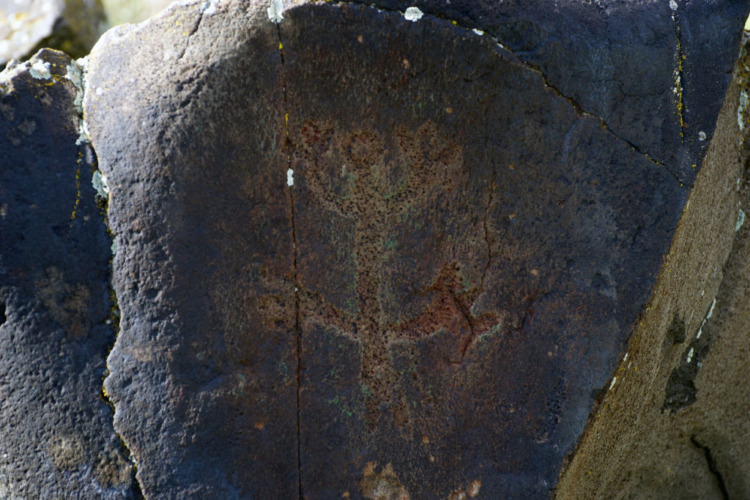




License is given to impose our (non-Native) interpretations and stereotypes on objects as if we have the same amount of knowledge or insights as the living descendants of those who created the images, or tribal archeologists and anthropologists. Our fantasies of renewal and closeness to nature, of a long lost authenticity that we associate with Indian tribes, are superimposed on the carvings, when we have no clue what they really meant in the context where they were created.
“The stakes in the interpretation of rock art are substantial. Interpretations of (pre)historic rock art’s original meanings and functions, especially when passed on to the public through guide books, museum displays, and interpretive materials at rock art sites, have the potential to shape perceptions of Native Americans, challenging or reinforcing dominant perceptions of indigenous cultures and histories.” (Ref.)
Native Americans such as Lillian Pitt explain the nature of these carvings as part of religious ceremonies, hunting rituals, or for the purpose of communicating important messages. Some were private, done by young people on vision quests, others public. Pictographs were painted with pigments derived from coal, iron oxide deposits (hematite and limonite), clay and copper oxide. Ground into powder and added to a binder of fat, blood, eggs, urine, saliva or plant juices, they were applied with fingers. Petroglyphs were achieved through carving into the rock, pecking, scratching, or scraping with a harder hammer stone. (Ref.)
They all have in common a spiritual nature which requires that the sanctity of the place where we encounter them (even if they have been moved four times in 50 years…) needs to be respected. Not my place of origin, not my culture, not my knowledge base – but a sense of linked humanity, a desire to communicate shared across the millennia.
It was easy to feel awe and reverence on that bright morning, myself a tiny speck in a large landscape, surrounded by ground squirrels and bald eagles, and goose tracks, facing a small tree that symbolized resilience, defying a barren location.
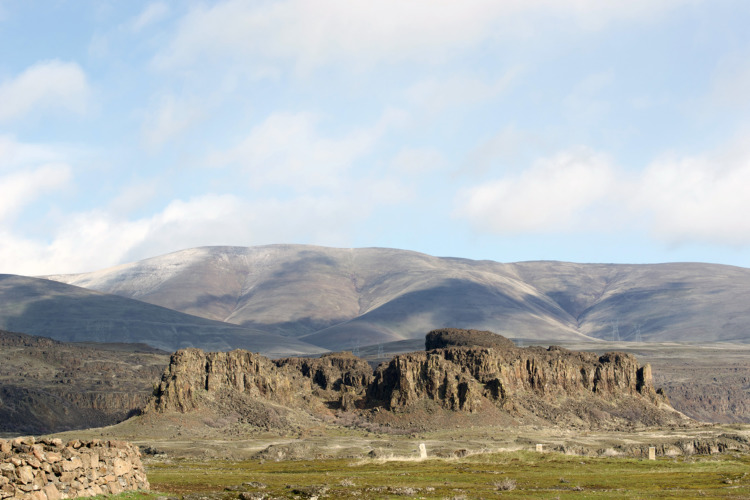


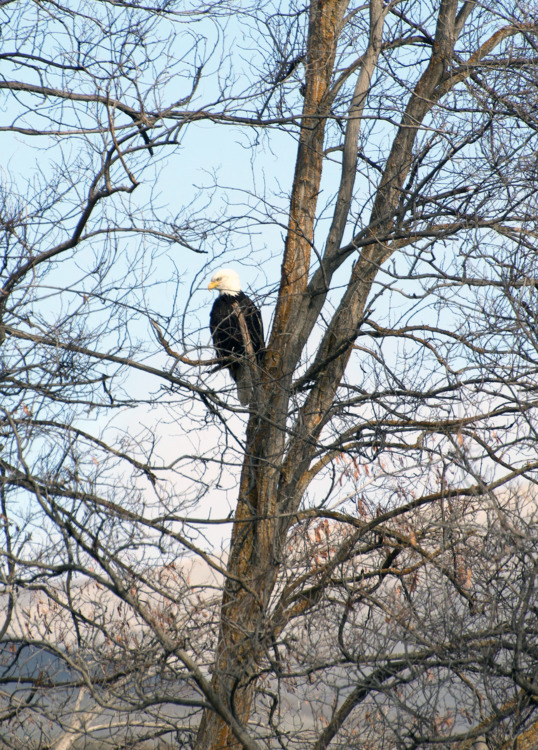

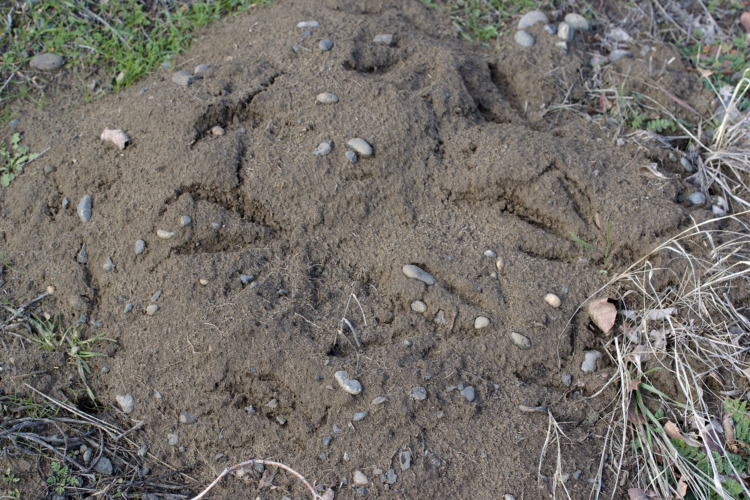
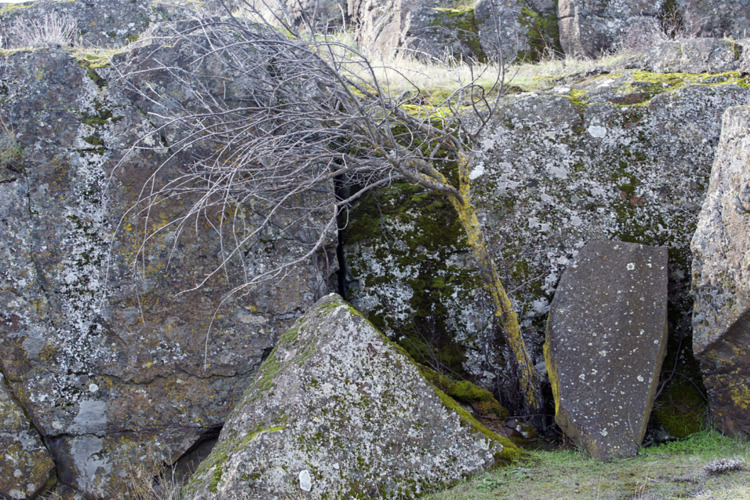
If you are interested in seeing work of contemporary Native American artists, here are just a few options from around the state:
- The Maryhill Museum of Art, which opens again March 15
- The Columbia Center for the Arts in Hood River
- Contemporary Native Voices: Prints from Crow’s Shadow, an exhibit at The Dalles Art Center that runs from February 4 through March 26
- Celilo – Never Silenced, an exhibit opening March 1 at the Patricia Reser Center for the Arts in Beaverton
- Ancestral Dialogues: Conversations in Native American Art, a permanent collection at the Hallie Ford Museum of Art in Salem
- The High Desert Museum in Bend











